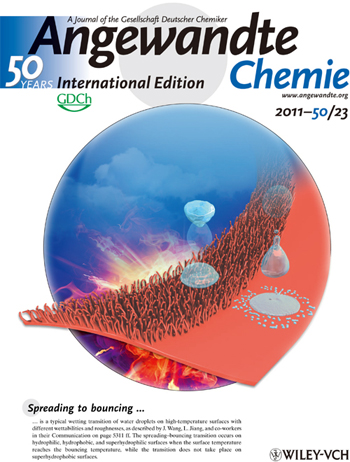With the discovery of novel wetting phenomena in nature, such as self-cleaning effect of lotus leaves and effortless stand and quick waterborne movement of water striders’ legs, surfaces with special wettability have recently attracted significant attention and have become increasingly important in our daily lives. Surface wettability at non-ambient temperature, especially at high temperature (above 100℃), is of great importance in many industrial processes (Acc. Chem. Res. 2010, 43, 368-377; Adv. Mater. 2008, 20, 2842-2858; Angew. Chem. Int. Ed. 2004, 43, 357-360).
Recently, under the supports of the National Natural Science Foundation of China, the Chinese Ministry of Science and Technology, the Chinese Academy of Sciences, and Institute of Chemistry, Dr Jiang Lei’s group in the Key Laboratory of Organic Solids studied the effect of chemical composition and surface morphology on the wetting behavior at high temperature (above 100℃) systematically. Spreading to bouncing is a typical wetting transition of water droplets on high-temperature surfaces with different wettability and roughness, as described by Jiang Lei and co-workers in their communication. The spreading–bouncing transition occurs on hydrophilic, hydrophobic, and superhydrophilic surfaces when the surface temperature reaches the bouncing temperature, while the transition does not take place on superhydrophobic surfaces. The two proposed mechanisms of wetting at high temperature explain the transition phenomena well. The results have been published in Angewandte Chemie International Edition (Angew. Chem. Int. Ed. 2011, 50, 5311-5314). The paper is selected to be VIP (very important paper) and highlighted at the back cover.
Further more, the high-temperature wetting transition could be potentially valuable in water transportation and other industrial applications, such as material choice in liquid–solid systems working at non-ambient temperature.

Back cover of Angewandte Chemie International Edition (Image by Zhang Tong et al.)
